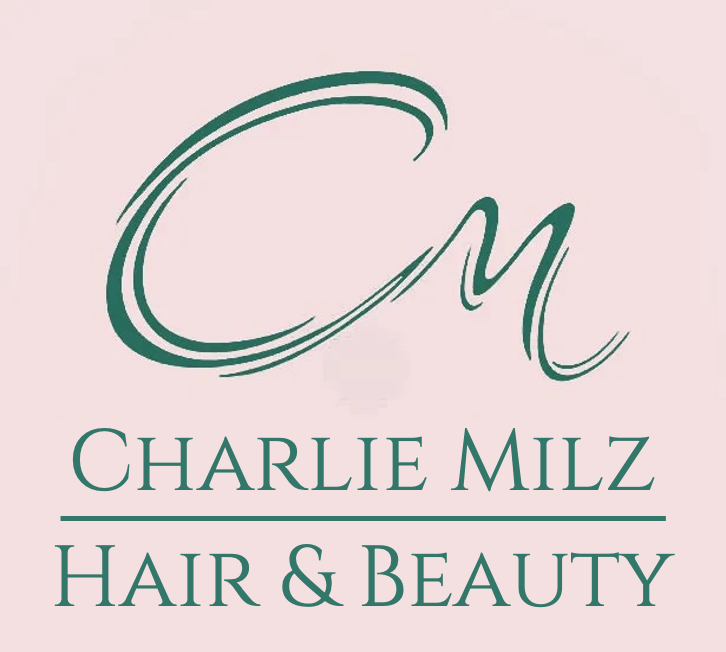Skin Conditions
The skin is the largest organ in the human body and serves as a protective barrier between the body and the outside world so it’s no wonder that, given how exposed skin is, many UK adults experience common conditions, ranging from mild irritation to chronic ailments that require ongoing care.
Treatment options for skin conditions can vary depending on the underlying cause and severity of the condition but one leading remedy that can help with the skin’s appearance or texture is laser cosmetic treatments, and this painless procedure can be used to treat a variety of conditions including:
Ageing
There are many quick fixes available on the beauty market, but the real key to success is implementing a healthy and nurturing skin routine with treatments that compliment and enhance your skin’s natural beauty.
As we age, our skin produces less collagen, a protein that provides structure and firmness to the skin, which is why we experience looser, saggy skin as we get older. This also contributes to fine lines and wrinkles – though these can also come from dehydrated skin, sun exposure, genetics, health conditions and poor lifestyle such as excessive alcohol, smoking or diet.
Ageing skin can also appear dry and dull, with uneven skin tones, compared to the clear supple skin we experienced naturally when we younger (and perhaps took for granted).New Paragraph
Recommend Treatment – Laser Skin Tightening
While ageing is inevitable, a tailored skincare and treatment plan can help focus on areas of concern and target ageing skin to help you achieve more youthful and radiant looking skin. Find out more about how skin tightening[NC1] can help to regenerate your skin or book in for a consultation[NC2] today.


Rosacea
Rosacea is a common skin condition that mainly affects the face. Symptoms typically include redness, flushing, and the appearance of small, red bumps or pustules. It can also cause the skin to feel hot and tender to touch.
The exact cause of rosacea is unknown, but it's thought to be related to a combination of factors. Certain triggers aggravate the condition including exposure to sunlight, stress, hot or spicy foods, alcohol, and certain medications.
Regular treatment can help to manage the symptoms and prevent flare-ups. Treatment options can include topical medications, oral antibiotics, and also tweaks to worsening lifestyle contributors listed above. However, in severe cases of rosacea, or in the instance where your confidence is impacted by this condition, laser therapy is a great choice to help treat.
Recommend Treatment – Cosmetic Laser
Procedure time: 30 – 45 minutes
Sessions needed: Four to five sessions at monthly intervals
Pain: Uncomfortable but not painful. Can be seen as warming and relaxing
Anaesthesia: None
Longevity: Long term
Downtime. Fading of redness begins immediately. Mild swelling may occur and last for a few days
Find out more about how your rosacea can be improved with safe and effective cosmetic skin treatments.
Liver, Sunspots and Pigmentation
Sun damage displays itself as multiple types of skin conditions, including liver and sunspots, freckles and patches of discolouration, eg pigmentation.
Pigmentation refers to the colour of the skin, which is determined by the amount of melanin in the skin. Melanin is a pigment that protects the skin from damage caused by the sun’s UV rays.
There are several types of pigmentation we can treat, including:
· Hyperpigmentation – an excess of melanin in the skin, which can result in dark spots or patches on the skin. This can be caused by sun damage, hormonal changes, inflammation, or certain medications.
· Liver Spots and Sunspots - Liver spots, commonly known as as age spot, are brown, or black spots that appear on the skin surface while remaining flat to the skin. Found on areas that get exposed to the sun including face and arms. They are more common in people over the age of 50, but they can occur in younger people as well. Contrary to their name, liver spots are not related to the liver and do not indicate any problems with liver function.
To prevent liver spots, sun spots, and pigmentation, it’s important to regularly wear suncream with an SPF of 30 or higher, and avoid sun during peak hours.
Recommend Treatment – Cosmetic Laser
Procedure time: 30 – 45 minutes depends on size and quantity.
Sessions needed: Between one and three
Results: Up to a week
Pain: Tolerable; feels like an elastic band snapping against the skin
Anaesthesia: None
Downtime: None. Aid skin healing with aloe vera to soothe any sensations on the treatment area
Pigmentation of the skin reacts well to laser treatments[NC1] , so if you’re experiencing a loss of confidence through your pigmentation, speak to one of our advisers [NC2] who can put you on the right course of laser therapy treatments.


Freckles
Freckles are typically very small, flat, and pigmented spots on the skin that are usually brown or tan/orangey in colour. They can be found anywhere on the body and tend to be more noticeable in people with fairer skin.
Freckles are caused by the overproduction of melanin, which is the pigment that gives our skin colour. When the skin is exposed to sunlight, the melanin in our skin increases to help protect us from the harmful effects of UV radiation. In people with fair skin, the melanin production may be more localised and concentrated, resulting in the appearance of freckles.
Freckles are often genetic, meaning that they can be inherited from your parents. They may also be triggered or worsened by exposure to sunlight, hormonal changes during puberty or pregnancy, and certain medications.
Recommend Treatment – Cosmetic Laser
Procedure time: 20 – 45 minutes depends on size and quantity.
Sessions needed: Between one and three
Results: Up to a week
Pain: Tolerable; feels like an elastic band snapping against the skin
Anaesthesia: None
Downtime: None. Aid skin healing with aloe vera to soothe any sensations on the treatment area
Facial Thread Veins
Varying in size and colour, facial veins are a very common condition that is essentially visible blood vessels that can appear on the surface of the skin.
Facial veins are commonly seen on the nose, cheeks, and chin, and are often referred to as "spider veins" because of their web-like appearance. They are caused by a variety of factors, including sun damage, aging, genetics, and certain medical conditions. Facial veins can be cosmetically concerning for some people, but they are typically harmless even if unsightly.
Treatment options include laser cosmetic treatment [NC1] where multiple sessions would be required to improve the appearance of facial veins. Treatment is not painful and is usually a permanent solution to removing these visual veins. If you’d prefer to read more on facial thread veins, visit our advice hub, where we have in-depth articles written by professionals to help you understand your condition more. Read Thread Veins: Causes, Symptoms and Treatments[NC2] .
Recommend Treatment – Cosmetic Laser
Procedure time: 15 – 40 minutes
Sessions needed: one to three, depending on the extent of your veins. Multiple veins in one area may require multiple visits
Results: Immediate. Small veins can disappear immediately, others can disappear over a few days
Pain: Uncomfortable but not painful. Can be seen as warming and relaxing
Anaesthesia: None
Longevity: Long term
Downtime. Fading of redness begins immediately. Mild swelling may occur and last for a few days


Cherry Angiomas
Cherry angiomas are non-cancerous skin growths that appears as small, smooth bumps on the skin, usually red or purple in colour. They can also be known as a senile angioma, Campbell de Morgan spot, or cherry haemangioma. The name "cherry" is because of its bright red colour and the shape of the bump resembles a cherry.
Cherry angiomas are usually found on the trunk of the body, but can also occur on the arms, legs, and face. They typically develop in adults and become more common with age. The cause of cherry angiomas is not completely known, but it is believed to be related to genetic factors and sun exposure.
A session of laser cosmetic treatment can treat the area to help remove a cherry angioma. This type of treatment is not painful and offers a permanent solution to removing unsightly skin growths, if they become bothersome to you.
Recommend Treatment – Cosmetic Laser
Procedure time: 15 – 40 minutes
Sessions needed: one to three, depending on the extent of your veins. Multiple veins in one area may require multiple visits
Results: Immediate. Small veins can disappear immediately, others can disappear over a few days
Pain: Uncomfortable but not painful. Can be seen as warming and relaxing
Anaesthesia: None
Longevity: Long term
Downtime. Fading of redness begins immediately. Mild swelling may occur and last for a few days
Leg Veins
Leg veins, including varicose veins, are enlarged, twisted veins that often appear on the legs and can cause discomfort, pain, or swelling – though are not a cause for concern. Spider veins are often smaller and less pronounced than varicose veins. Like facial veins, leg veins are caused by a variety of factors, including genetics, aging, and lifestyle factors such as prolonged standing or sitting. You can also experience these types of veins during pregnancy but they’re not thought to be dangerous, just unsightly for those that experience them.
As with other veins on the body, a great treatment option for you is cosmetic laser removal[NC1] . This is where your concerns about leg veins can be alleviated as treatment is usually permanent, and not painful.
For a more in-depth look at leg veins, read the article in our advice hub, written by professionals to help you understand these common skin conditions more. Read Thread Veins: Causes, Symptoms and Treatments[NC2] .
Recommend Treatment – Cosmetic Laser
Procedure time: 15 – 40 minutes
Sessions needed: one to three, depending on the extent of your veins. Multiple veins in one area may require multiple visits
Results: Immediate. Small veins can disappear immediately, others can disappear over a few days
Pain: Uncomfortable but not painful. Can be seen as warming and relaxing
Anaesthesia: None
Longevity: Long term
Downtime. Fading of redness begins immediately. Mild swelling may occur and last for a few days


Spider Naevi
Spider Naevi, also known as spider veins or spider angiomas, are very similar to Cherry Angiomas or Thread Veins, and are dilated blood vessels that appear on the skin's surface. They usually look like a red or blue spider web with a central point from which small blood vessels radiate outwards.
Spider Naevi is commonly found on the face, neck, chest, and arms. They are often only a cosmetic concern and can cause self-consciousness, especially if they appear on visible areas of the body but are not dangerous.
The exact cause of spider naevi is unknown, but they are believed to be related to changes in the hormone levels or increased pressure in the blood vessels and are more common in women, and can be associated with pregnancy, hormone imbalances or liver disease.
To permanently remove Spider Naevi veins, a course of laser cosmetic treatment can help. It’s a pain-free approach offering a permanent solution to removing these veins.
Recommend Treatment – Cosmetic Laser
Procedure time: 15 – 40 minutes
Sessions needed: one to three, depending on the extent of your veins. Multiple veins in one area may require multiple visits
Results: Immediate. Small veins can disappear immediately, others can disappear over a few days
Pain: Uncomfortable but not painful. Can be seen as warming and relaxing
Anaesthesia: None
Longevity: Long term
Downtime. Fading of redness begins immediately. Mild swelling may occur and last for a few days


